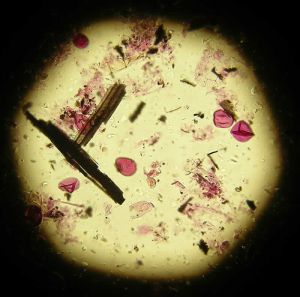Fire in New Zealand ecosystems
Understanding increased fire frequencies following human settlement as a novel driver in New Zealand ecosystems

Besides being essential for heating and cooking, fire has always and everywhere been the primary tool for clearing unwanted vegetation. Prehuman New Zealand was one of the few regions on the globe where natural fire played an insignificant role.
Our native trees and shrubs are, with few exceptions, highly vulnerable to fire and only a very limited range of native plants (e.g. manuka, matagouri, bracken and tussock) are favoured by repeated burning.
The widespread burning that accompanied the first settlers in the 13th century was therefore devastating. Much of what had been a largely forest-covered land was transformed into a patchwork of scrub, grassland and forest.
The fire-driven deforestation of New Zealand was unparalleled for its speed and completeness. Our research interest centres on explaining how and why it happened, and what the implications are for how we manage our post-fire landscapes. Globally, fire is now recognised as one of the major drivers of landscape and vegetation change and there is intense interest in understanding its fundamental dynamics.
Some key papers of interest
Palaeoecological
Argiriadis E, Battistel D, McWethy DB, Vecchiato M, Kirchgeorg T, Kehrwald NM, Whitlock C, Wilmshurst JM, Barbante C (2018) Lake sediment fecal and biomass burning biomarkers provide direct evidence for prehistoric human-lit fires in New Zealand. Scientific Reports 8: 12113.
Lyver PO’B, Wilmshurst JM, Wood JR, Jones CJ, Fromont M, Bellingham PJ, Stone C, Sheehan M, Moller H (2015). Looking back for the future: Local knowledge and palaeoecology inform bicultural restoration of New Zealand coastal ecosystems. Human Ecology 43: 681-695.
McWethy DB, Higuera PE, Whitlock C, Veblen TT, Bowman D, Cary GJ, Haberle SG, Keane RE, Maxwell BD, McGlone MS, Perry GLW, Wilmshurst JM, Holz A, Tepley AJ (2013). A conceptual framework for predicting temperate ecosystem sensitivity to human-impacts on fire regimes. Global Ecology and Biogeography 22: 900–912.
Perry G, Wilmshurst JM, McGlone MS, Napier A 2012. Reconstructing spatial vulnerability to forest loss by fire in prehistoric New Zealand. Global Ecology and Biogeography 21: 1029–1041.
Perry G, Wilmshurst JM, McGlone MS, McWethy D, Whitlock C 2012. Explaining fire-driven landscape transformation during the initial burning period of New Zealand’s prehistory. Global Change Biology 18: 1609–1621.
McWethy DB, Whitlock C, Wilmshurst JM, McGlone MS, Fromont M, Li X, Dieffenbacher-Krall A, Hobbs WO, Fritz S, Cook ER 2010. Rapid landscape transformation in South Island, New Zealand following initial Polynesian settlement. Proceedings of the National Academy of Sciences (USA) 107: 21343–21348.
McGlone MS, Wilmshurst JM, Meurk CD 2007. Climate, fire, farming and the recent vegetation history of subantarctic Campbell Island. Earth and Environmental Science Transactions of the Royal Society of Edinburgh 98: 71–84.
Contemporary fire ecology
Wyse SV, Wilmshurst JM, Burns BR, Perry GLW, 2018. New Zealand forest dynamics: a review of past and present vegetation responses to disturbance, and development of conceptual forest models. New Zealand Journal of Ecology 42: 87-106.
Battersby PF, Wilmshurst JM, Curran TJ, McGlone MS, Perry GLW. 2017. Exploring fire adaptation in a land with little fire: serotiny in Leptospermum scoparium (Myrtaceae). Journal of Biogeography 44: 1306-1318.
Perry GLW, Wilmshurst JM, Ogden J, Enright, N. 2015. Exotic mammals and invasive plants alter fire-related thresholds in southern temperate forested landscapes. Ecosystems 18: 1290.
McGlone MS, Perry GLW, Houliston GJ, Connor HE. 2014. Fire, grazing and the evolution of New Zealand grasses. New Zealand Journal of Ecology 38: 1–11.
Perry G, Wilmshurst JM, McGlone MS. 2014. A review of the ecology and long-term history of fire in New Zealand. New Zealand Journal of Ecology 38: 157–176.
Key contact
 Janet Wilmshurst
Janet Wilmshurst
 Matt McGlone
Matt McGlone
Key collaborators
George Perry (University of Auckland); Dave McWethy (Montana State University); Cathy Whitlock (Montana State University)
Funders
Manaaki Whenua-Landcare Research SSIF

